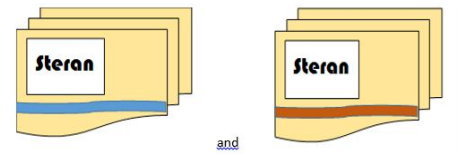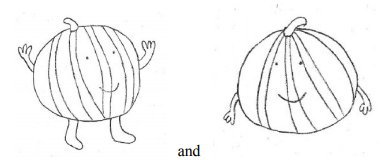Series of trade marks
2019/05/09 International9.5.2019
Section 51 of the Ordinance and rule 97 of the Rules provide for the registration of a “series of trade marks”.
According to section 51(3), a “series of trade marks means a number of trade marks which resemble each other as to their material particulars and differ only as to matters of a non-distinctive character not substantially affecting the identity of the trade mark”. This definition essentially reflects the old law on series marks (section 26, Cap. 43). Although this definition is a longstanding one, there has been no case law in Hong Kong on what constitutes a series. We are therefore guided by cases decided under similar provisions in the UK Trade Marks Act 1938 on series marks.
Examining applications for registration of a series of trade marks
Deleting a trade mark in a series
Are the trade marks a series?
(See Logica’s Trade Marks BL O/068/03 (UK Reg.))
In an application to register a shape as a trade mark, any material variation in the shape is likely to substantially affect the distinctive character of the mark and prevent it from forming a series of marks (Dualit Ltd’s Trade Mark Application [1999] RPC 304 at 324).
In Dualit, the application was for a series of 6 marks each showing the shape of a toaster in 3 dimensions. It was considered that the marks showing toasters with rounded ends and the marks showing toasters with angular ends would not form a series.
Examples of marks forming a series
Example

Examples of marks not forming a series
Examination of word marks (in Chinese) filed in series
Intellectual Property Department
The Government of the Hong Kong Special Administrative Region
Section 51 of the Ordinance and rule 97 of the Rules provide for the registration of a “series of trade marks”.
According to section 51(3), a “series of trade marks means a number of trade marks which resemble each other as to their material particulars and differ only as to matters of a non-distinctive character not substantially affecting the identity of the trade mark”. This definition essentially reflects the old law on series marks (section 26, Cap. 43). Although this definition is a longstanding one, there has been no case law in Hong Kong on what constitutes a series. We are therefore guided by cases decided under similar provisions in the UK Trade Marks Act 1938 on series marks.
Examining applications for registration of a series of trade marks
- .Is the application for registration made on the specified form, Form T2? Does the series consist of no more than 4 trademarks? Does the application include a representation of each mark in the series (rule 97(2))?
- .Was the specified fee paid when the application was filed (rule 4 and the Schedule to the Rules)? An application for the registration of a series of trade marks in one class requires only one application fee. If the application is for more than one class, class fees for the additional classes are also payable.
- .An application for registration of a series of trade marks is allocated a single application number. The application will result in a single registration unless, before registration, the applicant files a request to divide the application (rule 97(4)).
- .A series application can be divided into separate applications for one or more trade marks in the series (rule 97(4)). See chapter on Division of applications.
- .More than one priority date can be claimed in a series application if priority is claimed on the basis of more than one Convention/WTO application covering the different marks in the series. The different priority dates claimed need to be entered in the application.
- .Are the trade marks a series? See Are the trade marks a series? below.
- .If the marks are not considered to be a series, the applicant can apply to delete any of the marks or to divide the application, so that only those that are a series remain in the application.
Deleting a trade mark in a series
- .Is the request to delete a trade mark in a series filed on Form T5B (rule 98(1))?
- .Is the request to delete a trade mark in a series made by the applicant for the registration of a series of trade marks or the owner of a registered series of trade marks (rule 98(1))?
- .Delete the relevant mark in the series accordingly if the above conditions are satisfied (rule 98(2)). Enter the date the mark is deleted in the historical details of the register entry
Are the trade marks a series?
- .To qualify as a series of trade marks, the following conditions must be met:
-The trade marks in the series must resemble each other in their material particulars.
- The differences between the marks must not comprise matters which, when considered as a separate element of the mark, would be regarded as having a distinctive character
-The differences between the marks must not comprise matters which, when considered in the context of the trade mark as a whole, substantially affect the identity of the trade mark. - .Any difference between the marks in a series must be of a non-distinctive character and must leave the visual, aural and conceptual identity of each of the marks substantially the same. The matters must be assessed from the perspective of the average consumer of the goods or services in question.
- .Thus, the marks must be considered both visually and phonetically. The overall idea and impression are also important. An alteration which affects the way a mark is or may be pronounced, or its visual impact or the idea conveyed by the mark cannot satisfy the test. The variation between members of a series must be such that no additional element or dimension is contributed thereby to the overall identity of the marks.
(See Logica’s Trade Marks BL O/068/03 (UK Reg.))
In an application to register a shape as a trade mark, any material variation in the shape is likely to substantially affect the distinctive character of the mark and prevent it from forming a series of marks (Dualit Ltd’s Trade Mark Application [1999] RPC 304 at 324).
In Dualit, the application was for a series of 6 marks each showing the shape of a toaster in 3 dimensions. It was considered that the marks showing toasters with rounded ends and the marks showing toasters with angular ends would not form a series.
Examples of marks forming a series
- .The same word in different scripts or fonts may form a series :
Example

- .The same word represented with or without a simple border, underlined or not underlined
Example

- .The same Chinese words in traditional and simplified characters :
Example

- .Differences in upper and lower case and lettering which do not lead to the component words in the marks being perceived or pronounced differently :
Example

- .Differences in punctuation which do not alter the character of the marks :
Example

- .If colour is only a non-distinctive feature of a mark, variations in colour :
Example


- .Where the characters in the marks are in different poses and/or facial expressions, if the poses and the facial expressions are not the primary distinctive features of the characters in the series and the marks will be recognised as the same character:
Example

Examples of marks not forming a series
- .

The second mark lacks a significant feature of the first. The second mark lacks a significant feature of the first. - .

The applicant claims the colours green, red, black and purple as elements of the mark on the right. The colours of the mark on the right substantially affect the identity of the trade mark and prevent it from forming a series of marks with the mark on the left. - .

The second mark consists of a cartoon character without legs. The two marks differ visually and conceptually. The differences substantially affect their identity.
Examination of word marks (in Chinese) filed in series
- .The usual way of reading Chinese characters is from left to right and from top to bottom and this is the way we assess characters in examining them as trade marks for registration (see absolute grounds for refusal).
- .In line with the principle above, marks in Chinese characters represented from left to right (mark A) and right to left (mark B) are not a series. The reason is that the public will be likely to read the marks from left to right and, as a result, the identity of the marks will be different.
- .However, there are marks containing characters that should obviously be read from right to left. This would happen where it is immediately apparent that the mark is the name of an individual or a company
 or the grammatical structure of the mark requires that it should be read from right to left
or the grammatical structure of the mark requires that it should be read from right to left  Marks consisting of identical Chinese characters represented horizontally (one to be read from left to right and the other from right to left) could be considered as forming a series if they fall into this category.
Marks consisting of identical Chinese characters represented horizontally (one to be read from left to right and the other from right to left) could be considered as forming a series if they fall into this category.
Intellectual Property Department
The Government of the Hong Kong Special Administrative Region


